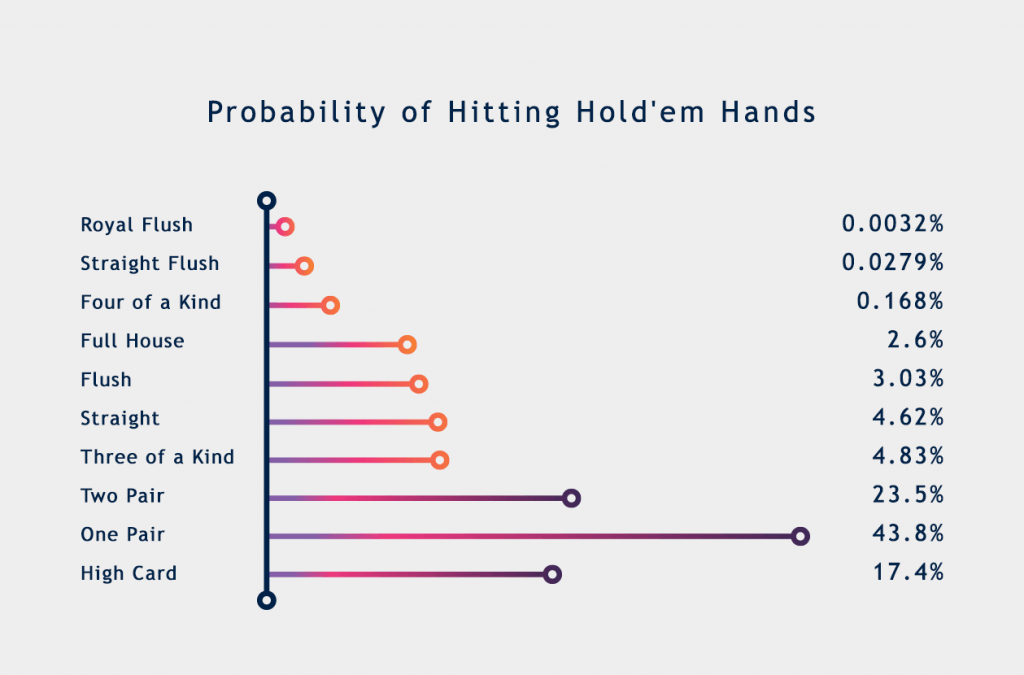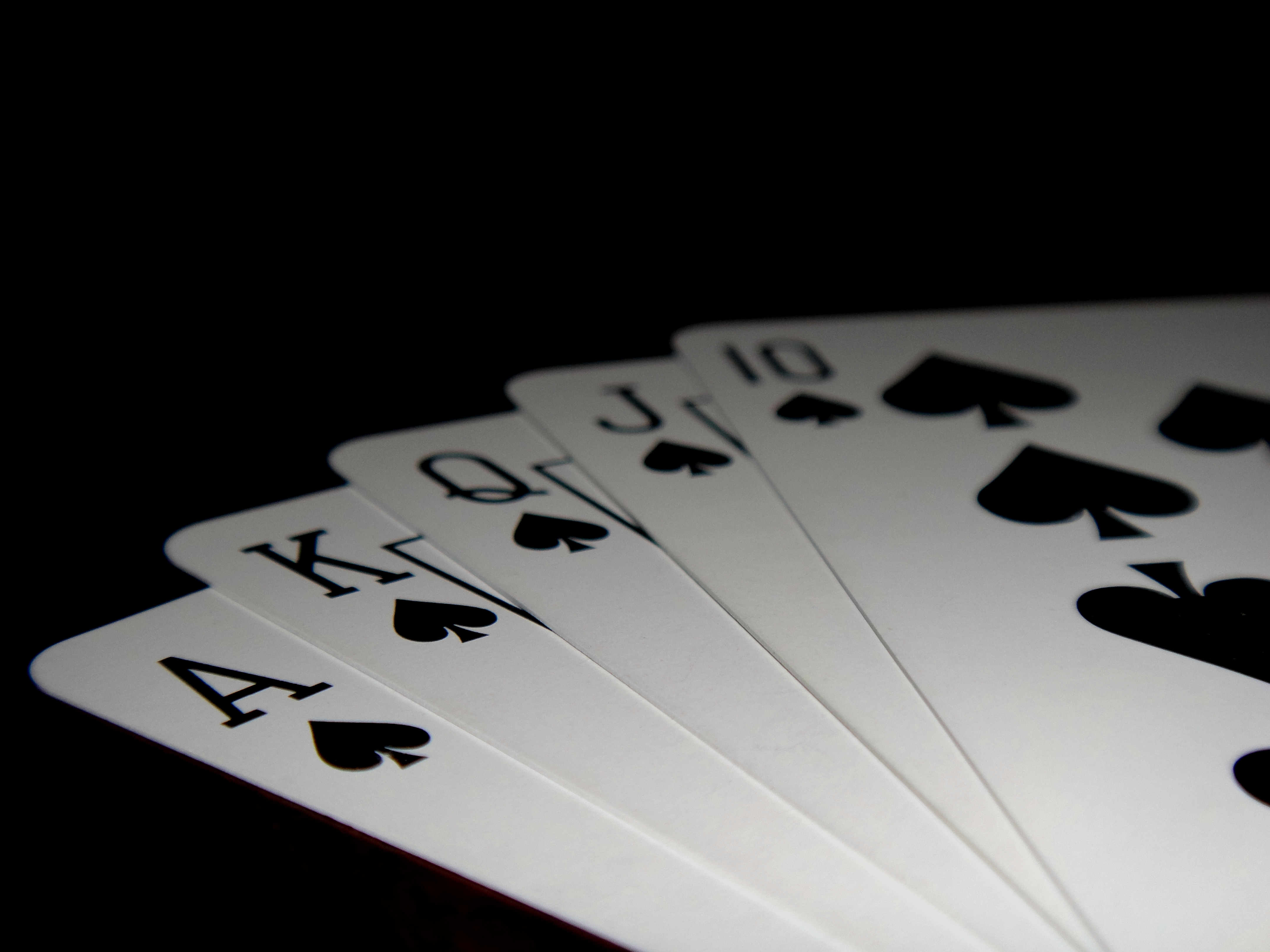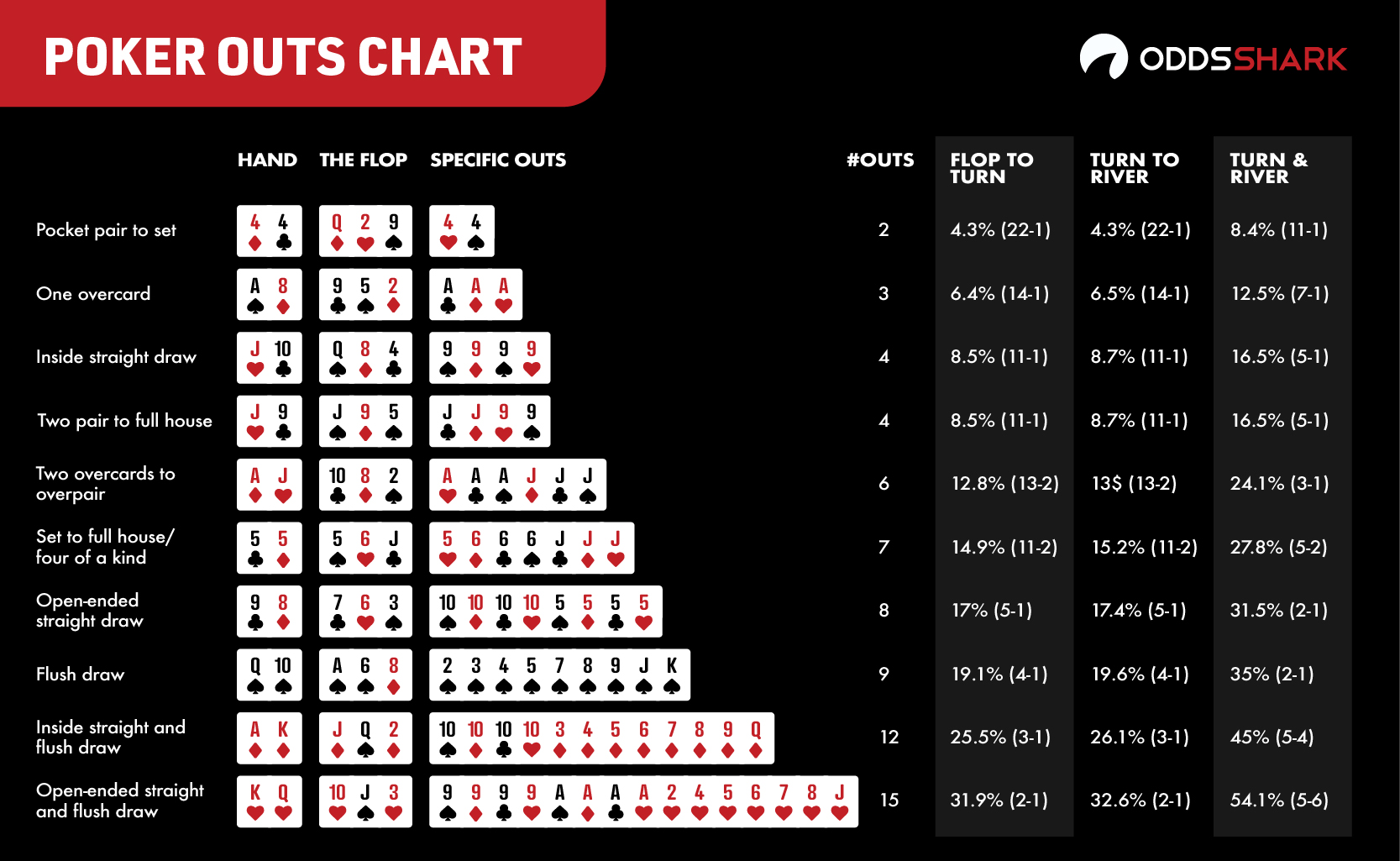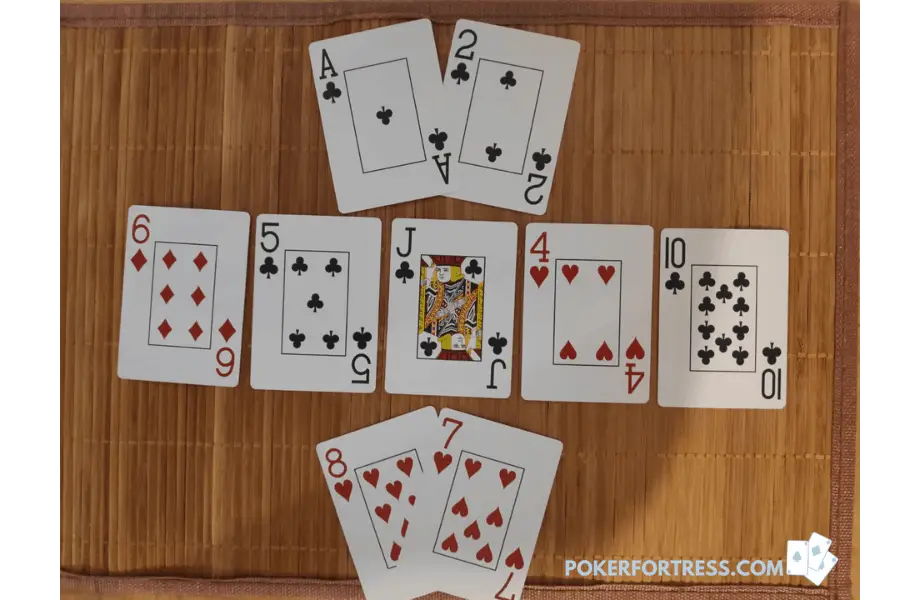Poker Straight Flush Probability
Mark Brader has provided the following tables of probabilities of the various five-card poker hands when five cards are dealt from a single 52-card deck, and also when using multiple decks.
- The probability of being dealt a royal flush is the number of royal flushes divided by the total number of poker hands. We now carry out the division and see that a royal flush is rare indeed. There is only a probability of 4/2,598,960 = 1/649,740 = 0.00015% of being dealt this hand.
- The probability is the fraction of the 2,598,960 hands that meet the requirement of the type of hands in question. Note that royal flush is not listed. This is because it is included in the count for straight flush. Royal flush is omitted so that he counts add up to 2,598,960.



Poker Straight Flush Probability Table
The traditional hand types are described on the poker hand ranking page. These include one hand that belongs to two types at once - a straight flush is both a straight and a flush. With two or more decks, it is possible for other combinations to occur, such as a hand that has both a flush and a pair (such as 4-6-6-8-9 all of one suit). The left-hand tables include these composite hand types for multiple decks; in these tables 'plain' means a hand that is not a flush.
Poker Straight Flush Probability Formula
Odds of Making a Straight on the Later Streets. The probability of making a Straight on the later streets depends on the type of draw we flop. Open-ended Straight draws (OESD) have 8 outs, while gutshots have 4 outs. Odds of hitting from flop to turn. Odds of hitting an open-ended Straight draw from flop to turn = 8/47 = 0.1702 or about 17%.

The hands are listed in descending order of probability, which could be used as the basis for their ranking order in multi-deck poker variations. It can be seen that as the number of decks increases, flushes become easier to make than straights, and sets of equal cards become more common.

Poker Straight Flush Probability Calculator
Here is the Perl program that produced the tables. Mark Brader has placed both the program and the tables in the public domain.
Probabilitiesfor 6 card poker hands with misc. wild cards
Probabilitiesfor 7 card poker hands with misc. wild cards
Probabilitiesfor 8 card, 9 card, and 10 card poker hands with misc. wild cards
Lowball (Low Ball) poker probabilities with misc. wild cards (5 to 10 cards)
http://www.durangobill.com/LowballPoker/Lowball_Poker.html
Click here for optimal strategy and expected value for Video Poker
http://www.durangobill.com/VideoPoker.html
The probability of being dealt various poker hands has been printed in many other sources. We present the probabilities for a 5 card deal here, and then concentrate on how to calculate these numbers.
Poker Hand Number of Combinations Probability
--------------------------------------------------------
Royal Straight Flush 4 .0000015391
Other Straight Flush 36 .0000138517
Four of a kind 624 .0002400960
Full House 3,744 .0014405762
Flush 5,108 .0019654015
Straight 10,200 .0039246468
Three of a kind 54,912 .0211284514
Two Pairs 123,552 .0475390156
One Pair 1,098,240 .4225690276
High card only 1,302,540 .5011773940
Total 2,598,960 1.0000000000
(See Probabilitiesfor 5 card poker hands with misc. wild cards for additional details.)
The first calculation that must be made is to determine the total possible poker hands. A poker hand consists of 5 cards randomly drawn from a deck of 52 cards. Thus, the number of combinations is COMBIN(52, 5) = 2,598,960. Each of these 2,598,960 hands is equally likely. For each of the above “Number of Combinations”, we divide by this number to get the probability of being dealt any particular hand.
For the calculations, we will first split out the “No Pair” hands which include Royal Straight Flushes, Straight Flushes, Flushes, Straights, and “Nothings”. Then, we will look at all combinations that have at least 1 pair.
The cards in a hand without any pairs will have 5 different denominations selected randomly from the 13 available (2, 3, 4...Ace). Also, each of the 5 denominations will select 1 suit from the four available suits. Thus the total number of no-pair hands will equal:
COMBIN(13, 5) * (COMBIN(4, 1))^5 = 1287 * 1024 = 1,317,888.
A Straight Flush consists of 5 consecutive cards in the same suit and may have a high card of 5, 6, 7, 8, 9, 10, Jack, Queen, King, or Ace for a total of 10 different ranks. Each of these may be in any of 4 suits. Thus there are 40 possible Straight Flushes. An Ace high Straight Flush is a Royal Flush. Since there are only 4 different suits, there are only 4 possible Royal Straight Flushes. When we subtract the 4 Royal Straight Flushes from the total of 40 Straight Flushes, we are left with 36 other Straight Flushes that are King high or less.
A Flush consists of any 5 of the 13 cards from a particular suit. There are 4 possible suits. Thus the number of possible Flushes is: COMBIN(13, 5) * 4 = 5,148. However, this includes the 40 possible Straight Flushes. When we subtract these out, we are left with: 5,148 - 40 = 5,108 possible ordinary Flushes.
A Straight consists of 5 cards with consecutive denominations and may have a high card of 5, 6, 7, 8, 9, 10, Jack, Queen, King, or Ace for a total of 10 different ranks. Each of these 5 cards may be in any of the 4 suits. Thus there are 10 * 4^5 = 10,240 different possible straights . However, this total includes the 40 possible Straight Flushes. Thus we subtract 40, which leaves us with 10,200 possible ordinary Straights.
Finally, we come to the “Nothing” hands which are basically all the left over garbage. This is simply the total number of “No Pair” hands minus all the good stuff. This gives us: 1,317,888 - 4 - 36 -5,108 - 10,200 = 1,302,540 “Nothing” hands.
Now on to 1 pair or better. A hand with just 1 pair has 4 different denominations selected randomly from the 13 available denominations. 3 of these denominations will select 1 card randomly from the 4 available suits. The 4th denomination will select 2 cards from the available 4 suits. Finally, the pair can be any one of the four available denominations. Thus the calculation is: COMBIN(13, 4) * (COMBIN(4, 1))^3 * COMBIN( 4, 2) * 4 = 1,098,240 possible hands that have just one pair.
The calculation for a hand with two pairs is similar. We will have 3 random denominations taken from the 13 available. Two of these denominations will use 2 of the four available suits while the third denomination selects 1 of the four available suits. The singleton card may be any one of the three denominations. Thus, the calculation becomes: COMBIN(13, 3) * (COMBIN(4, 2))^2 * COMBIN(4, 1) * 3 = 123,552 possible hands with 2 pairs.
Three of a kind is calculated in a similar manner. There will be 3 different denominations from the 13 possible denominations. One denomination will select 3 of the 4 available suits while the other two denominations select 1 card from each of the 4 possible suits. Finally, the three of a kind can be in any of the three denominations. The calculation becomes: COMBIN(13, 3) * COMBIN(4, 3) * (COMBIN(4, 1))^2 * 3 = 54,912 possible hands with 3 of a kind.
The next calculation will be for a Full House. A Full House only uses 2 of the 13 denominations. One of these will select 3 cards from the 4 available while the other selects 2 cards from the 4 available. Finally the denomination that has 3 cards can be either one of the 2 denominations that we are using. This gives us: COMBIN(13, 2) * COMBIN(4, 3) * COMBIN(4 , 2) * 2 = 3,744 possible Full Houses.
The final calculation is for 4 of a kind. Again, we will select 2 denominations from the 13 available. One of these will select 4 cards from the 4 available (Obviously the only way to do this is to take all four cards.) while the other denomination takes 1 of the available 4 cards. The denomination that has 4 of a kind can be either one of the 2 available denominations. Thus, the calculation becomes: COMBIN(13, 2) * COMBIN( 4, 4) * COMBIN( 4, 1) * 2 = 624 different ways of being dealt 4 of a kind. (On the draw, ask one of the other players what the odds are of drawing to an inside straight. Then draw your card. It won't make any difference though as no one else will have anything, and they will all fold.)
Return to Durango Bill's Home page
Web page generated via Sea Monkey's Composer HTML editor
within a Linux Cinnamon Mint 18 operating system.
(Goodbye Microsoft)